Individuals are increasingly resorting to imaginative methods to recycle waste materials in today’s fast-paced society, where sustainability is a watchword.
The technique of making wall hangings out of scrap materials is one such popular artistic endeavour.
This blog delves into the interesting world of repurposed wall décor, which offers a unique combination of eco-friendliness and artistic expression.
The Allure of Waste Material Wall Hangings
Waste material wall hangings demonstrate human ingenuity and resourcefulness.
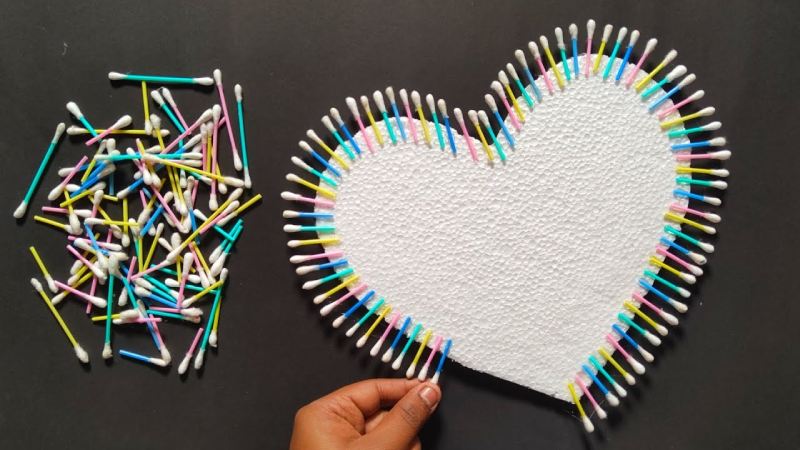
Individuals may help to a better environment while adding a touch of creativity to their living spaces by reusing goods that might otherwise wind up in landfills. The options are unlimited, and the results may be breathtaking.
Have a look at wall hanging designs.
Types of Waste Material Wall Hangings
Paper Collage Extravaganza
Paper collage wall hangings are an easy and environmentally beneficial method to recycle unwanted magazines, newspapers, and cardboard.
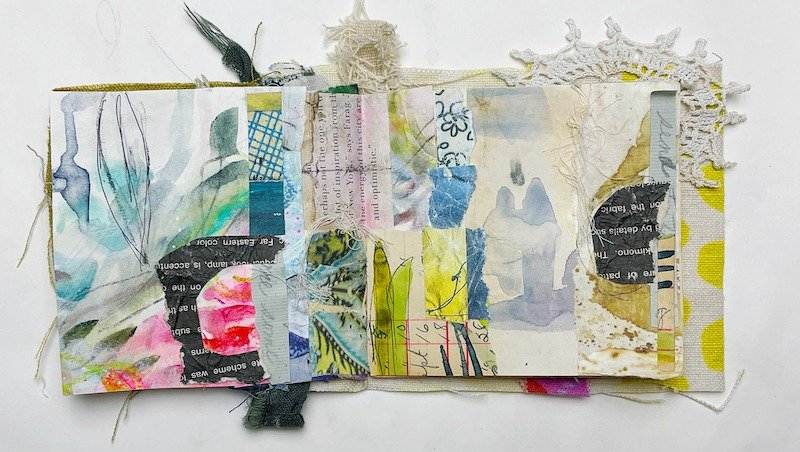
Collecting these materials and carefully picking colours, textures, and patterns that resonate with your creative vision are all part of the process.
- Gathering and Preparation: Begin by gathering various paper materials. Consider the colour scheme and general style you wish to create while cutting or tearing them into tiny pieces.
- Design and Layout: Create a design on a canvas or a strong board. Experiment with different paper piece configurations to create the most visually pleasing composition.
- Adhesive Application: Attach the paper pieces to the canvas with eco-friendly adhesives. Consider stacking and overlaying your collage to add depth and intrigue.
- Finishing Touches: Once the primary collage is finished, try adding other components such as paint, glitter, or other decorative things to improve the overall impact.
Get information about – Wall hanging hook
Textile Tapestry Magic
Creating wall tapestries out of old garments, fabric scraps, and abandoned materials requires a combination of weaving, knotting, and patchwork techniques.
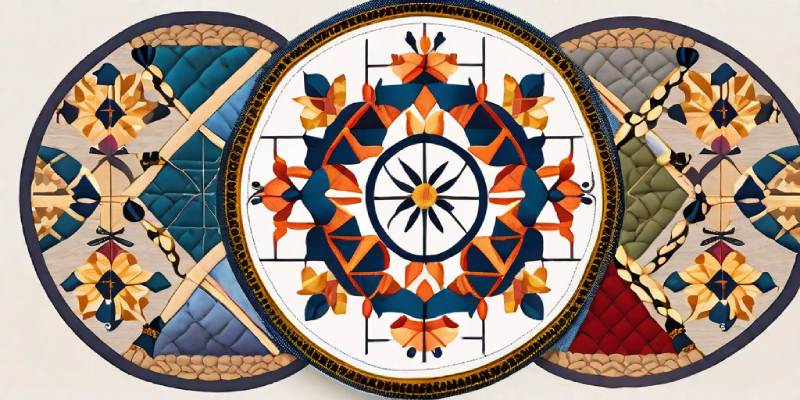
This method not only produces one-of-a-kind and artistically appealing products, but it also solves the issue of textile waste.
- Textile Selection: Gather a wide range of fabrics with varying textures, colours, and designs. Your tapestry may repurpose old garments, fabric scraps, and even worn-out linens.
- Weaving or Knotting Techniques: Explore weaving or knotting techniques to produce complicated patterns, depending on your design. Macramé, for example, is a popular knotting method that gives your tapestry a bohemian feel.
- Layering and Dimension: Play around with different textile layers to provide dimension and visual interest. Consider adding beads, buttons, or other decorations to add texture.
- Mounting and Display: After your cloth tapestry is finished, choose a mounting option. For a more informal, boho-chic style, consider framing the tapestry or putting it to a wooden dowel.
You can also look at hanging lights for dining room.
Plastic Fantastic Creations
Plastic trash is a widespread environmental problem, and making wall hangings out of discarded plastic products is both artistic and environmentally responsible.
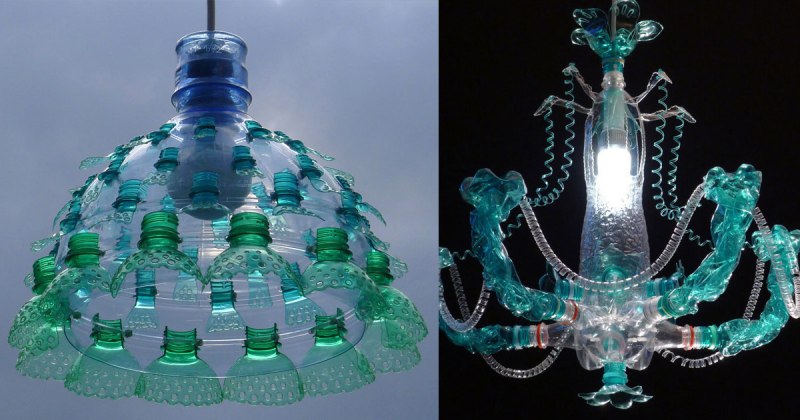
To create contemporary and abstract sculptures, this procedure frequently involves cutting, melting, or moulding plastic.
- Plastic Collection and Preparation: Gather plastic goods like bottles, containers, or packaging materials. Remove labels and other non-essential pieces from the plastic before cleaning and preparing it for crafts.
- Cutting and Reshaping: Cut the plastic into desired shapes with scissors or a utility knife. To generate unusual shapes, heating procedures like as melting or reshaping using heat guns can be used.
- Assembling the Pieces: Arrange the cut or reshaped plastic pieces to create a unified pattern. For a visually appealing effect, experiment with transparency, layering, and colour changes.
- Environmental Considerations: Make certain that the plastic used is safe to manipulate and that any leftovers or offcuts are disposed of or recycled properly. This stage is critical for sustaining the project’s eco-friendliness.
Explore more about – Balcony lights hanging
Wooden Wonders
Repurposed wood, pallets, and old furniture may be transformed into attractive and rustic wall hangings.
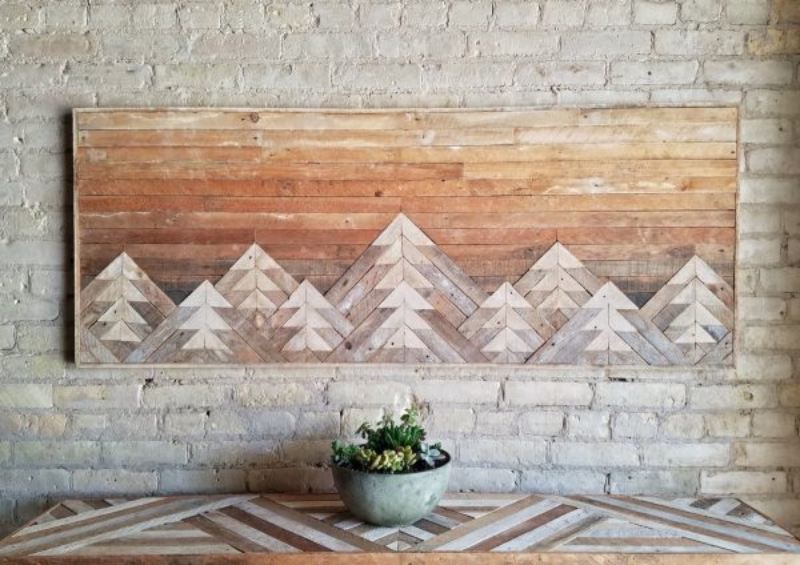
To make visually pleasing patterns, this method frequently entails cutting, sanding, and assembling wooden parts.
- Wood Selection and Preparation: Identify appropriate wood pieces for your project. This might be reclaimed wood, pallets, or antique furniture. Sand away any rough edges or defects to clean and prepare the wood.
- Cutting and Assembling: Shape the wood into the necessary shapes using a saw or other cutting tools. This might entail making frames, panels, or complicated patterns.
- Staining or Painting: Apply stains or paints to enhance the inherent beauty of the wood. This phase allows you to personalise the look of your wall hanging while also ensuring that it compliments your existing décor.
- Hanging Mechanism: Securely attach a hanging mechanism to the rear of your wooden product. Depending on the situation, this might be a simple hook or a more complex mounting system.
Here is trendy Wall Wine.
DIY Adventure: Crafting Your Waste Material Wall Hanging
Gather Your items: Before beginning your DIY project, gather all of the items you’ll need based on the waste material you’ve chosen.

Collect old magazines and cardboard, for example, if you’re doing a paper collage.
- Create Your Wall Hanging: Sketch out your design on paper. Think about the size, form, and general look you want to accomplish.
- Cut, Shape, and Assemble: Follow the directions for the waste material you’ve chosen. Cut and shape the materials to your specifications, then begin assembling the components.
- Finishing Touches: Add finishing touches to your wall hanging to make it unique. This might include paint, decorations, or any other things that improve the overall look.
You should also know – Wall cladding for shop
Conclusion
Finally, the realm of waste material wall hangings is an intriguing mix of creativity and sustainability.
Whether you choose paper, fabrics, plastic, or wood, each medium has its own set of possibilities for producing art that not only graces your walls but also has a good influence on the environment.
Accept the DIY challenge and let your creativity run wild as you turn discarded materials into gorgeous wall decor.
Consider reading -


